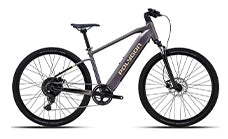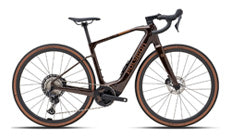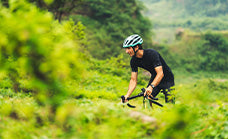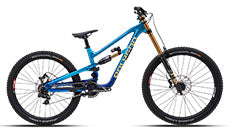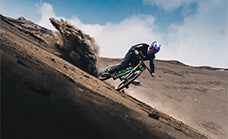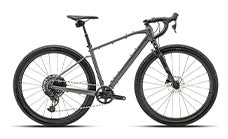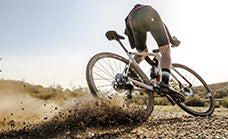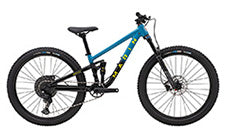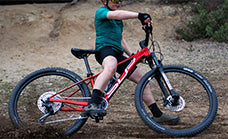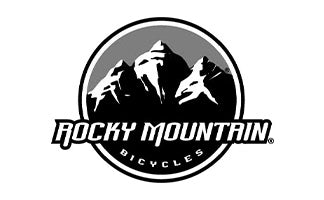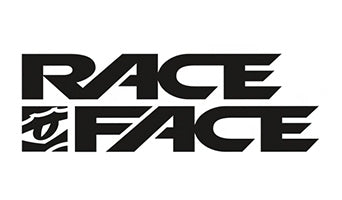The Best MTB Parts for Upgrade Enthusiasts
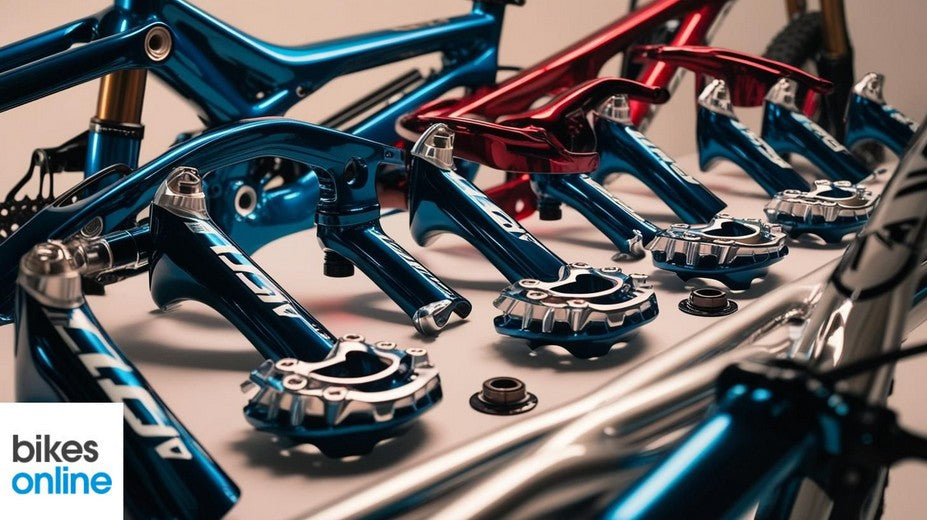
So, you’re into mountain biking and you're looking to upgrade your ride. Whether you're a seasoned rider or just someone who loves tinkering with their bike, improving various components can make a world of difference. From suspension to brakes, let’s dive into the best MTB parts you should consider upgrading.

Suspension: Plush rides over rocky terrain
The suspension system is key when it comes to handling rough mountain trails. Upgrading to high-quality forks and rear shocks will drastically improve your bike's performance on bumpy trails and technical downhill sections. Look for models with advanced damping and rebound adjustments to tailor your ride to your style.
For front suspension, air forks are increasingly popular. They offer excellent adjustability and lighter weight compared to coil forks. Meanwhile, rear shocks with multiple modes (such as climb, trail, and descend) provide flexibility according to different terrains. Don't forget to set them up correctly based on your weight and riding preference for optimal performance.
Tires and tubeless: Grippy tires for better traction
Your tires play a crucial role in how your bike handles on different surfaces. Switching to tubeless tires can significantly enhance your riding experience. Tubeless systems eliminate pinch flats and allow you to run lower tire pressures, providing better grip and comfort.
Choose tires that are appropriate for your local trails. If you mostly ride on loose or muddy paths, go for tires with more aggressive tread patterns. For hard-packed or rocky trails, opt for something less knobby but still offers a good balance between speed and traction.
Wheels: Rolling faster and smoother
Upgrading your wheelset can make your bike roll more efficiently and handle better. Carbon fiber wheels are a premium option—they’re not only lighter but also stiffer, which translates to quicker acceleration and sharper handling.
If carbon isn't within your budget, there are many high-performing aluminum wheelsets available too. Make sure to check the width of the rims; wider rims provide better tire support and improved cornering stability.
Drivetrain: Smooth shifting and efficiency
A smooth and efficient drivetrain makes a huge difference, especially on challenging climbs. Consider upgrading to a 1x (one-by) setup, where there's only one chainring at the front. This simplifies shifting and reduces chain drops.
High-end drivetrains often feature precise and quick-shifting capabilities. Look for lightweight yet robust materials like stainless steel and titanium in critical components. Additionally, opting for a wide-range cassette can help you navigate steep hills with ease.
Brakes: Stopping power when you need it most
When flying down a steep descent, reliable brakes are indispensable. Hydraulic disc brakes offer superior stopping power compared to mechanical options. They require less effort to actuate and provide consistent performance in all weather conditions.
Consider investing in rotors with larger diameters if you frequently tackle steep descents. A well-bled hydraulic system and brake pads suitable for your riding conditions ensure maximum effectiveness. Don’t forget, regular maintenance like changing brake fluid and pads is essential to keep them performing perfectly.
Contact points: Comfort is key
Comfortable contact points make long rides more enjoyable. Start with upgrading your saddle. Look for one that suits your anatomy and has ample padding. Saddles come in different shapes, so testing a few might be necessary to find the perfect match.
The grips on your handlebars also matter. Ergonomic grips can alleviate hand fatigue while offering better control. Pair these with gloves designed for mountain biking to absorb shock and prevent blisters.
Pedals: Secure footing for powerful strokes
Good pedals make a huge difference in power transfer and stability. Clipless pedals securely attach your feet to the bike, increasing pedaling efficiency. They might take some getting used to, but once mastered, provide better control and energy transfer.
If you prefer the freedom of movement, consider high-quality flat pedals. These offer wider platforms and grippy pins to keep your feet in place, making them ideal for technical trails and downhill adventures.
Dropper post: Instant height adjustment
A dropper post allows you to adjust your seat height on the fly. Lowering your saddle during descents gives you more room to maneuver and lowers your center of gravity, resulting in better control.
Modern dropper posts are cable-actuated or hydraulic and come with varying travel lengths. Choose one that matches your frame’s requirements and offers smooth operation. Trust me, this upgrade will transform your riding experience.
Cockpit: Fine-tuning handlebar and stem
Lastly, consider upgrading your cockpit. The handlebars and stem can greatly affect your bike's handling characteristics. Wider handlebars provide better leverage and control, especially on tough trails. Adjusting the rise and sweep of the bars can also enhance comfort and control.
A shorter stem brings the handlebars closer, which improves maneuverability and response—perfect for tight technical sections. On the other hand, a slightly longer stem can be beneficial for cross-country rides where a low, stretched position provides aerodynamic benefits.
FAQs about upgrading mountain bike parts
What are the key considerations for upgrading MTB suspension?
First, identify whether you need to upgrade your fork or rear shock, or both. Prioritize models with adjustable features like damping and rebound. Ensure proper setup according to your weight and riding preferences for the best performance.
How do I choose the right tires for my MTB?
Choose tires based on the typical terrain you ride on. Aggressive tread patterns work best for loose or muddy trails, while less knobby tires suit hard-packed or rocky paths. Tubeless setups offer better grip and reduced flats, enhancing overall ride quality.
Why switch to a 1x drivetrain?
A 1x drivetrain simplifies gear shifting by having a single front chainring. This reduces complexity, decreases the chances of chain drops, and provides a cleaner look. Many riders appreciate the straightforward operation and efficiency, especially on challenging climbs.
Is a dropper post necessary for all riders?
While not mandatory, a dropper post significantly enhances your ability to adapt to changing terrains. Instantly lowering the seat on descents improves maneuverability and stability, making it a worthwhile investment for those tackling varied and technical trails.


